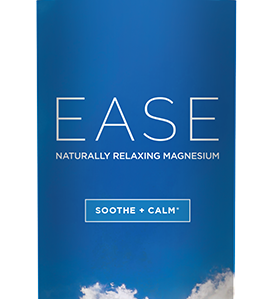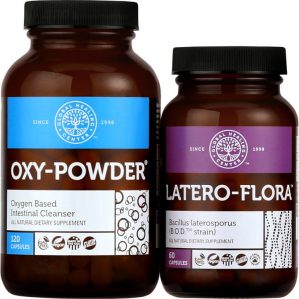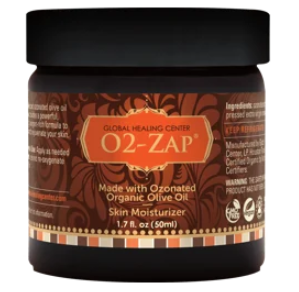What You Need To Know About Air Fryers – The 5 Scary Health Risks of Using Air Fryers and 8 Heavy Metals To Avoid
The Health Risks of Using Air Fryers
Overview
Air fryers have gained immense popularity as a healthier alternative to traditional frying methods, promising crispy textures with significantly less oil. However, despite their benefits, there are potential health risks associated with their prolonged use. Concerns have been raised about the formation of harmful compounds such as acrylamide during the high-temperature cooking of starchy foods, which may increase cancer risk.
Additionally, the potential leaching of chemicals from non-stick coatings and metal components, such as per- and poly-fluoroalkyl substances (PFAS), bisphenol A (BPA), and heavy metals, into food poses significant health threats, including hormonal disruptions, reproductive issues, and neurological problems. Furthermore, the convenience of air frying might lead to an increased intake of processed foods, contributing to various chronic health conditions. I hope to highlight some of the health risks associated with the use of air fryers and the importance of understanding and mitigating these risks to make informed decisions about their use in this article. Feel free to share your thoughts and experiences in the comment section.
A Brief History of Air Fryers
Early Development
The concept of air frying dates back to the 1940s when the first convection ovens were developed. Convection ovens use a fan to circulate hot air around the food, cooking it more evenly and quickly than traditional ovens. This technology laid the groundwork for the development of air fryers.
Invention and Introduction
Modern air fryers, as we know it today, were invented by Fred van der Weij, a Dutch inventor, in the early 2000s. Van der Weij’s invention was motivated by a desire to create a healthier alternative to deep frying. He spent years experimenting with various designs and technologies before finally developing a prototype that used Rapid Air Technology. This technology involves circulating hot air at high speeds around the food to cook it from all sides, resulting in a crispy exterior similar to deep-fried food but with significantly less oil.
Commercial Launch
In 2010, Philips, a Dutch multinational corporation, introduced the first commercial air fryer, the Philips Airfryer, at the Internationale Funkausstellung
Growing Popularity
Following Philips’ successful launch, other manufacturers quickly entered the market with their own versions of air fryers. Companies like Tefal, Black+Decker, and Ninja released air fryers with various features and designs, catering to a wide range of consumer preferences. The growing variety of models and price points helped to popularize air fryers and make them more accessible to a broader audience.
Technological Advancements
As air fryers gained popularity, manufacturers continued to innovate and improve the technology. Newer models featured digital controls, pre-programmed cooking settings, and additional cooking functions such as roasting, baking, and grilling. These advancements made air fryers even more versatile and convenient for home cooks.
Present Day
Today, air fryers are a staple in many households around the world. They are praised for their ability to cook a variety of foods quickly and with less oil than traditional frying methods. The market for air fryers continues to grow, with ongoing innovations aimed at improving their performance, efficiency, and user-friendliness.
The Health Risks of Air Fryers
- Formation of Acrylamide
One of the primary concerns with air fryers is the formation of acrylamide, a potentially harmful chemical that forms in certain foods during high-temperature cooking processes, such as frying, roasting, and baking. Acrylamide has been linked to an increased risk of cancer in animal studies, and while more research is needed to determine its effects on humans, the International Agency for Research on Cancer (IARC) has classified it as a “probable human carcinogen”.
- High Cooking Temperatures
Air fryers operate at high temperatures, often exceeding 400°F (200°C). Cooking at such high temperatures can lead to the production of harmful compounds, such as advanced glycation end products (AGEs) and polycyclic aromatic hydrocarbons (PAHs). These compounds have been associated with inflammation, oxidative stress, and an increased risk of chronic diseases, including cardiovascular disease and diabetes.
- Nutrient Loss
While air frying can reduce the amount of fat in food compared to traditional frying methods, it can also lead to a significant loss of nutrients. High heat can degrade vitamins and antioxidants in vegetables and other nutrient-rich foods. For instance, vitamin C, which is sensitive to heat, can be significantly reduced during the air frying process.
- Potential for Overconsumption
The convenience and appeal of air-fried foods can lead to overconsumption. Just because air-fried foods are marketed as healthier doesn’t mean they are low in calories or devoid of unhealthy ingredients. Overeating these foods can contribute to weight gain and associated health problems, such as obesity and metabolic syndrome.
- Misleading Health Claims
The marketing of air fryers often emphasizes their ability to cook food with less oil, giving the impression that air-fried foods are inherently healthy. However, this can be misleading. The reduction in oil does not eliminate other unhealthy aspects of the food being cooked, such as high levels of sodium, preservatives, and unhealthy fats present in processed foods.
Heavy Metals and Chemicals in Air Fryers: Potential Risks
Air fryers are popular for their ability to cook food with minimal oil, providing a healthier alternative to traditional frying methods. However, concerns have been raised about the potential leaching of heavy metals and harmful chemicals from air fryer materials into food. Here are some of the primary concerns:
- Per- and Polyfluoroalkyl Substances (PFAS)
PFASs, a group of man-made chemicals, are often used in non-stick coatings found in the basket of many air fryers. PFAS have been linked to various health issues, including liver damage, thyroid disease, and cancer. Over time, these chemicals can degrade and potentially leach into food during cooking.
- Bisphenol A (BPA)
Some components of air fryers may contain BPA, a chemical used in the production of certain plastics and resins. BPA can leach into food, especially when exposed to high temperatures, and has been associated with reproductive disorders, heart disease, and diabetes.
- Phthalates
Phthalates are chemicals used to make plastics more flexible. They are sometimes found in plastic components of air fryers. These substances can leach into food, particularly when heated, and have been linked to endocrine disruption, developmental issues in children, and other health problems.
- Lead and Cadmium
Lead and cadmium are heavy metals that can be found in the manufacturing of certain ceramic and enamel coatings used in air fryers. If these coatings degrade over time or are of poor quality, they can leach into food. Lead exposure is particularly harmful, causing neurological issues and developmental delays, while cadmium can cause kidney damage and bone demineralization.
- Polycyclic Aromatic Hydrocarbons (PAHs)
While not directly related to the materials of air fryers, PAHs can form during the cooking process, particularly when food is cooked at high temperatures and fat drips onto heating elements, causing smoke. PAHs are known carcinogens and pose significant health risks when ingested.
While air fryers are generally considered safe for cooking, concerns about the potential leaching of heavy metals from the materials used in their construction have been raised. Besides lead and cadmium, other heavy metals such as arsenic, mercury, and chromium could potentially leach into food under certain conditions. Here’s a more detailed look at these additional heavy metals:
- Arsenic
Arsenic is a toxic element that can be present in the metal parts of air fryers if they are manufactured using contaminated materials. Chronic exposure to arsenic has been associated with various health issues, including skin lesions, developmental effects, cardiovascular disease, and cancer.
- Mercury
Mercury is another heavy metal that could potentially leach into food from air fryers, particularly if inferior quality materials are used in manufacturing. Mercury exposure can lead to serious health problems, including neurological and developmental damage, particularly in fetuses and young children.
- Chromium
Chromium, especially in its hexavalent form (Cr(VI)), is a known carcinogen. While stainless steel components in air fryers are typically made with safe levels of chromium, poor manufacturing practices or degradation over time could lead to the leaching of chromium into food. Chronic exposure to hexavalent chromium can cause lung cancer, respiratory irritation, and weakened immune responses.
Potential Sources of Heavy Metal Contamination
Heavy metal contamination in air fryers can occur due to various reasons, including:
- Poor Manufacturing Practices: Using substandard or contaminated raw materials in the production of the components of air fryers.
- Degradation of Coatings: The deterioration of protective coatings over time, especially non-stick coatings, can expose the underlying metal to food.
- High-Temperature Cooking: Prolonged exposure to high temperatures can exacerbate the leaching of heavy metals from the appliance’s components.
Mitigation Measures
- Choose High-Quality Air Fryers: Opt for air fryers made from high-quality materials, preferably with stainless steel components, and free from harmful chemicals like PFAS, BPA, and phthalates.
- Regular Maintenance: Regularly check and maintain your air fryer to ensure that the non-stick coatings are intact and not deteriorating.
- Avoid Overheating: Try not to cook at excessively high temperatures to minimize the formation of harmful chemicals and compounds.
- Research and Reviews: Before purchasing air fryers, research and read reviews to ensure that the product has been tested and certified to be free from harmful substances.
How To Select Safe Air Fryers
Selecting the safest air fryers involves considering several factors related to materials, design, and manufacturer reputation. Here are some guidelines to help you choose safe and reliable air fryers:
Material Safety
- Non-Toxic Coatings: Ensure air fryers have a non-stick coating free from per- and poly-fluoroalkyl substances (PFAS), Bisphenol A (BPA), and phthalates. Look for products that use ceramic or other non-toxic materials for their non-stick surfaces.
- Stainless Steel Components: Opt for air fryers with stainless steel baskets and interiors rather than plastic or low-quality metals, as stainless steel is less likely to leach harmful substances.
Quality Certifications
- FDA and EU Compliance: Check if the air fryers comply with FDA or European Union (EU) safety standards for food contact materials.
- Third-Party Testing: Look for air fryers that have been tested and certified by independent organizations such as UL (Underwriters Laboratories), NSF International, or SGS, which can ensure the safety and quality of the appliance.
Manufacturer Reputation
- Brand Reputation: Choose air fryers from well-known, reputable brands that have a history of producing high-quality kitchen appliances. These companies are more likely to adhere to strict safety standards.
- Customer Reviews: Read customer reviews and ratings to learn about other users’ experiences with air fryers. Pay attention to comments about the build quality, durability, and any safety concerns raised.
Design Features
- Overheat Protection: Ensure air fryers have built-in overheat protection to prevent the appliance from overheating, which can damage the components and potentially cause harmful substances to leach into food.
- Easy-to-Clean: Select air fryers with removable, dishwasher-safe parts to make cleaning easier and more thorough, which helps maintain the integrity of the non-stick coating and other components.
Warranty and Customer Support
- Warranty: Choose air fryers that come with a good warranty period, which indicates the manufacturer’s confidence in their product’s durability and safety.
- Customer Support: Ensure the manufacturer provides reliable customer support to address any issues or concerns that may arise during use.
Selecting the safest air fryer involves careful consideration of the materials used, the quality certifications obtained, the reputation of the manufacturer, and the design features that ensure safety and ease of use. By following these guidelines, you can enjoy the benefits of air frying while minimizing the risks associated with harmful substances.
Dangers of Prolonged Use
While air fryers are popular for their ability to cook food with less oil, there are some potential health risks associated with their prolonged use. These risks largely stem from the formation of certain harmful compounds during cooking and the potential leaching of chemicals from the materials used in the construction of air fryers.
- Formation of Acrylamide
Acrylamide is a chemical that can form in starchy foods during high-temperature cooking methods, such as frying, roasting, and baking. Acrylamide has been classified as a “probable human carcinogen” by the International Agency for Research on Cancer (IARC), meaning it may increase the risk of cancer in humans. Prolonged consumption of foods high in acrylamide could potentially increase cancer risk.
- Advanced Glycation End Products (AGEs)
AGEs are harmful compounds formed when protein or fat combine with sugar in the bloodstream. High-temperature cooking, including air frying, can increase the formation of AGEs in foods. Chronic exposure to high levels of AGEs has been linked to oxidative stress, inflammation, and an increased risk of chronic diseases such as diabetes, cardiovascular disease, and Alzheimer’s disease.
- Potential Chemical Leaching
Prolonged use of air fryers with non-stick coatings that contain Per- and Polyfluoroalkyl Substances (PFAS), Bisphenol A (BPA), or phthalates can lead to the leaching of these chemicals into food. These substances have been linked to various health issues, including:
- PFAS: Increased risk of cancer, liver damage, thyroid disease, and developmental issues.
- BPA: Hormonal disruptions, reproductive disorders, heart disease, and diabetes.
- Phthalates: Endocrine disruption, developmental issues in children, and other health problems.
- Polycyclic Aromatic Hydrocarbons (PAHs)
PAHs are a group of chemicals that can form when fat and juices from meat grilled directly over an open flame drip onto the fire, causing flames and smoke. Although this is less common in air fryers compared to traditional grilling, it can still occur if food is cooked at excessively high temperatures. PAHs are known carcinogens and pose significant health risks when ingested over long periods.
- Overconsumption of Processed Foods
The convenience of air frying may lead to an increased consumption of processed foods, which are often high in sodium, unhealthy fats, and preservatives. A diet high in processed foods can lead to various health issues, including obesity, hypertension, heart disease, and type 2 diabetes.
While air fryers can offer a healthier alternative to traditional frying methods by reducing fat content, they are not without potential health risks. These risks include the formation of harmful compounds like acrylamide and AGEs, chemical leaching from non-stick coatings, and the potential for overconsumption of processed foods. To mitigate these risks, it is important to use air fryers in moderation, choose high-quality appliances, and focus on cooking whole, unprocessed foods.
After Thought
While air fryers can be a useful tool for reducing fat intake compared to traditional frying methods, they are not without their health risks. The potential formation of harmful chemicals, nutrient loss, and the risk of overconsumption are important factors to consider. Moderation and a balanced diet remain key to maintaining good health.
For those using air fryers, it is advisable to be mindful of cooking temperatures and durations, choose healthier food options, and not rely solely on the perceived benefits of air frying. It is also important to be aware of the potential risks associated with heavy metal contamination. By choosing high-quality products and adhering to proper maintenance practices, these risks can be minimized, ensuring that the benefits of air frying can be enjoyed safely.
Start incorporating Solaris into your diet today to help start enjoying its health benefits and experience a revitalized Optimal Health.
For natural and healing remedies, products, and supplements to help you live your most optimal healthy life, visit our store here!
Remember: Own Your Health!
If you enjoyed the information presented in this article, Please Share It. Help us reach more people and keep this website going! Thank you n advance!
Note: The information provided in this article is for educational purposes only and should not be considered medical advice. Please consult with a healthcare professional or registered dietitian before making any significant changes to your diet or lifestyle.
Frequently Asked Questions Air Fryer Dangers
- Do air fryers release harmful chemicals into food?
Air fryers can potentially release harmful chemicals into food, particularly if the non-stick coatings contain per- and polyfluoroalkyl substances (PFAS), bisphenol A (BPA), or phthalates. Over time and with repeated use, these chemicals may degrade and leach into the food, posing health risks such as hormonal disruptions, reproductive issues, and increased cancer risk.
- Can using air fryers increase the risk of cancer?
Cooking starchy foods at high temperatures in air fryers can lead to the formation of acrylamide, a chemical classified as a “probable human carcinogen” by the International Agency for Research on Cancer (IARC). Prolonged consumption of foods high in acrylamide may increase the risk of cancer.
- Are there any respiratory risks associated with using air fryers?
Air fryers can produce fumes and smoke, especially if fatty foods are cooked at high temperatures. These fumes can contain volatile organic compounds (VOCs) and polycyclic aromatic hydrocarbons (PAHs), which can irritate the respiratory system and may increase the risk of respiratory issues and cancer with prolonged exposure.
- Can the use of air fryers lead to nutrient loss in food?
Like many high-temperature cooking methods, air frying can lead to some nutrient loss, particularly of heat-sensitive vitamins like vitamin C and certain B vitamins. However, this is not unique to air fryers and can occur with other cooking methods such as boiling, grilling, and frying.
- Are there risks of heavy metal contamination from air fryers?
Air fryers with components made from low-quality metals or poorly manufactured non-stick coatings may leach heavy metals such as lead, cadmium, and chromium into food. Prolonged exposure to these heavy metals can lead to various health issues, including neurological problems, kidney damage, and increased cancer risk.
- Can air frying contribute to unhealthy eating habits?
While air fryers can reduce the amount of oil used in cooking, their convenience might lead to an increased consumption of processed foods, which are often high in sodium, unhealthy fats, and preservatives. A diet high in processed foods can contribute to obesity, hypertension, heart disease, and type 2 diabetes.
References
- National Cancer Institute. (2021). Acrylamide and Cancer Risk. Retrieved from NCI
- International Agency for Research on Cancer. (2010). Acrylamide. Retrieved from IARC
- Uribarri, J., et al. (2010). Advanced glycation end products in foods and a practical guide to their reduction in the diet. Journal of the American Dietetic Association, 110(6), 911-916.
- Smith, C. J., & Hansch, C. (2000). The relative toxicity of compounds in mainstream cigarette smoke condensate. Food and Chemical Toxicology, 38(6), 637-646.
- Miglio, C., et al. (2008). Effects of different cooking methods on nutritional and physicochemical characteristics of selected vegetables. Journal of Agricultural and Food Chemistry, 56(1), 139-147.
- Malik, V. S., et al. (2013). Sugar-sweetened beverages and weight gain in children and adults: a systematic review and meta-analysis. The American Journal of Clinical Nutrition, 98(4), 1084-1102.
- Mozaffarian, D., et al. (2006). Trans fatty acids and cardiovascular disease. New England Journal of Medicine, 354(15), 1601-1613.
- Philips. (2010). Philips Airfryer – a new way to fry with air. Retrieved from Philips Press Release
- Chudgar, R. (2010). Philips launches air fryer in Europe. Appliance Magazine. Retrieved from Appliance Magazine
- Urvaksh, K. (2018). The Rise of the Air Fryer: How a New Appliance has Revolutionized Home Cooking. Business Insider. Retrieved from Business Insider
- IEEE GlobalSpec. (2017). The Evolution of Convection Oven Technology. Retrieved from Engineering360
- U.S. Environmental Protection Agency (EPA). (2021). PFAS Explained. Retrieved from EPA
- Mayo Clinic. (2019). What are the health risks of BPA? Retrieved from Mayo Clinic
- Centers for Disease Control and Prevention (CDC). (2020). Factsheet: Phthalates. Retrieved from CDC
- World Health Organization (WHO). (2010). Exposure to Cadmium: A Major Public Health Concern. Retrieved from WHO
- National Institute of Environmental Health Sciences (NIEHS). (2020). Polycyclic Aromatic Hydrocarbons (PAHs). Retrieved from NIEHS
- Tchounwou, P. B., et al. (2012). Arsenic toxicity, mutagenesis, and carcinogenesis—a health risk assessment and management approach. Molecular and Cellular Biochemistry, 301(1), 1-10.
- Agency for Toxic Substances and Disease Registry (ATSDR). (2007). Toxicological Profile for Arsenic. Retrieved from ATSDR
- Clarkson, T. W., Magos, L., & Myers, G. J. (2003). The toxicology of mercury—current exposures and clinical manifestations. New England Journal of Medicine, 349(18), 1731-1737.
- World Health Organization (WHO). (2017). Mercury and health. Retrieved from WHO
- Zhitkovich, A. (2011). Chromium in drinking water: sources, metabolism, and cancer risks. Chemical Research in Toxicology, 24(10), 1617-1629.
- National Institute for Occupational Safety and Health (NIOSH). (2013). NIOSH Pocket Guide to Chemical Hazards. Retrieved from NIOSH
- U.S. Environmental Protection Agency (EPA). (2021). PFAS Explained. Retrieved from EPA
- U.S. Food and Drug Administration (FDA). (2018). Bisphenol A (BPA): Use in Food Contact Application. Retrieved from FDA
- European Food Safety Authority (EFSA). (2019). Update of the risk assessment of di‐butylphthalate (DBP), butyl‐benzyl‐phthalate (BBP), bis(2‐ethylhexyl) phthalate (DEHP), di‐isononyl phthalate (DINP) and di‐isodecyl phthalate (DIDP) for use in food contact materials. EFSA Journal, 17(10), e05838.
- Underwriters Laboratories (UL). (2021). UL Marks and Labels. Retrieved from UL
- International Agency for Research on Cancer (IARC). (2010). Acrylamide. Retrieved from IARC
- National Cancer Institute. (2021). Acrylamide and Cancer Risk. Retrieved from NCI
- Uribarri, J., et al. (2010). Advanced glycation end products in foods and a practical guide to their reduction in the diet. Journal of the American Dietetic Association, 110(6), 911-916.
- U.S. Environmental Protection Agency (EPA). (2021). PFAS Explained. Retrieved from EPA
- U.S. Environmental Protection Agency (EPA). (2016). Health Effects Support Document for Perfluorooctanoic Acid (PFOA). Retrieved from EPA
- World Health Organization (WHO). (2015). WHO calls on countries to reduce sugars intake among adults and children. Retrieved from WHO
- Mozaffarian, D., et al. (2006). Trans fatty acids and cardiovascular disease. New England Journal of Medicine, 354(15), 1601-1613.
- National Institutes of Health (NIH). (2021). Office of Dietary Supplements – Vitamin C. Retrieved from NIH
- National Institutes of Health (NIH). (2021). Office of Dietary Supplements – Vitamin B6. Retrieved from NIH
Featured Image Credit:Image by freepik ;Image by 8photo on Freepik;































0 Comment